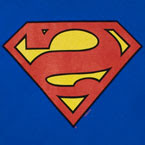 p, Wilson is a British ex-con who flies out to Los Angeles after his daughter dies in a car crash in order to find out what happened and settle the score with those that have wronged her. Though the daughter's death was apparently an accident, Wilson suspects more was going on and looks into her relationship with Terry Valentine (Peter Fonda), a music producer.
p, Wilson is a British ex-con who flies out to Los Angeles after his daughter dies in a car crash in order to find out what happened and settle the score with those that have wronged her. Though the daughter's death was apparently an accident, Wilson suspects more was going on and looks into her relationship with Terry Valentine (Peter Fonda), a music producer.Both Stamp and Fonda carry with them the roles they played in movies in the 60s, and that helps inform the audience of their motivations here. The personal relationships are stripped to a minimum, and thus the audience is largely in the dark on any backstory, causing a sort of subconscious reliance on what we know of the types of characters Stamp and Fonda usually play.
The film frequently features dialogue and background sound from previous or future scenes juxtaposed with a current scene. Dialogue from one conversation, for instance, may find itself dispersed throughout the film, articulated for the first time long after its chronological moment has passed, as a sort of narrative flashback superimposed over later conversation, to complete a character's thought or punctuate a character's emphasis. Certain touchstones include Wilson sitting on the airplane thinking of his daughter and Wilson’s conversation with Eduardo (Luis Guzman) after arriving in LA. This causes certain shots to have different meanings depending upon where one sees them in the film. Soderbergh plays with the editing not to just be unorthodox, but to use the grammar available in film to its full effect though it is in ways that conventional filmmakers have eschewed.
A similar technique is also used when introducing the character of Valentine, where Soderbergh uses future scenes from the movie to establish a trailer of sorts to introduce the character. At that time, the audience doesn’t know that it is seeing into the future of the narrative, though it starts to become more clear on a second viewing that the editing is playing with the concept of memory.

For example, when Wilson first meets Elaine (Leslie Ann Warren), a single conversation is depicted as taking place in three different locations simultaneously, with cuts back and forth as the conversation progresses. Though this makes absolutely no chronological sense, it works because the entire movie acts as a sort of memory play, and if one has a conversation over several hours with another person, they may not recall exactly what was said where but will remember the salient details of the conversation. Yet the memory analogy breaks down a bit for we see no through the eyes of one person, but rather (or at least) two: Wilson and Valentine.
Though a violent film, most of the violence is kept at a distance. In a well-praised shot, the camera stays back on the street as Wilson walks into a warehouse and kills several men inside. As the lone survivor runs away, Wilson walks out with blood splattered on his face, causing one to imagine what happened and have more impact because of that. Later at a party Valentine is throwing in his house, Wilson head butts a bodyguard and throws him over the side of a balcony to his death (shown here). But this is shot from inside the house and the action takes place over the shoulder of Fonda, keeping it again at a distance, and honestly making it funnier.
Not to be overlooked is the insertion of clips from a 1967 film called Poor Cow in which Terence
 Stamp played a petty thief. Wilson's daughter died as an adult, but each time he thinks of her he sees her as she was when she was still a little girl. Those scenes of her childhood, and of Stamp as a younger man, come out of Poor Cow, which was shot by Ken Loach in a sort of grainy documentary-esque style that really makes it seem that they are memories rather than just clips from another movie.
Stamp played a petty thief. Wilson's daughter died as an adult, but each time he thinks of her he sees her as she was when she was still a little girl. Those scenes of her childhood, and of Stamp as a younger man, come out of Poor Cow, which was shot by Ken Loach in a sort of grainy documentary-esque style that really makes it seem that they are memories rather than just clips from another movie.I saw this movie back when it was originally released, but I was young and didn’t know much about film then. Today I still don’t know much about film, but I know a lot more than I did, and this honestly is one of the most creative movies I have watched in a long time. Soderbergh is a great director, one of the best today, and this is as good a film as any to see that. Watch The Limey, if not for the editing and directing, then for Stamp, who has one of my favorite monologues in a scene with veteran character actor Bill Duke.

No comments:
Post a Comment